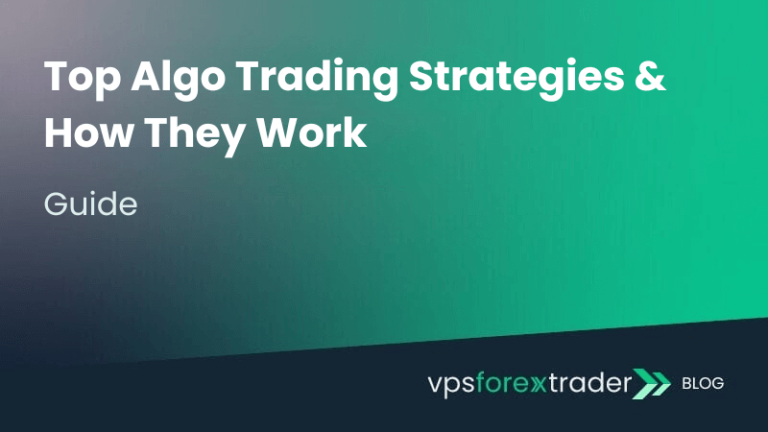Would you like to trade forex on a user-friendly platform you can customize to suit your needs? MetaTrader 4 has been a popular trading software for almost two decades. Developed by MetaQuotes Software and released in 2005, it has become the go-to platform for forex trading.
If you’re curious about trying out the MetaTrader 4 platform, keep reading because we’ve prepared a quick guide about the platform, its benefits and features. You’ll also find a step-by-step guide on how to download and install MT4.
What is MetaTrader 4 (MT4)?
MetaTrader 4, or MT4 for short, is a popular forex (FX) trading software. While traders mainly use MT4 for foreign currency trading, the platform also lets you trade commodities and stocks.
Many forex brokers offer MT4 as their primary trading platform because it is user-friendly and customizable. You can develop your own trading scripts, indicators, and automated trading strategies using the platform’s built-in programming language, MQL4.
Key Features of the MT4 Trading Platform
MT4 offers many useful features for beginner and experienced traders. You can choose which features to use based on your investment strategy and needs.
Here’s what you get
- Charting and analysis tools to research price chart patterns. The platform offers 9 timeframes and over 30 built-in technical indicators for analyzing trends. On top of that, you get analytical aids such as lines, channels, geometric shapes, etc. to better identify and confirm trends.
- Automated trading allows you to use expert advisors (EAs) to analyze market data and make trades automatically. You can use the Strategy Tester to backtest your EAs.
- Easy trading and one-click trading to speed up your deals. You can also make multiple orders and use trailing stop functionality.
- Easy access to your trading history and real-time account information.
- You can use the MQL4 programming language to create custom indicators and EAs.
- You can also access the program through a mobile app and sync it with your desktop program.
- Easy access to market data, real-time quotes, price alerts, financial news, and more.
How to Get Started with MetaTrader 4
Don’t worry if at first, this all sounds a bit confusing. Once you download and install the platform, you should get the hang of it pretty quickly.
First: Choose a broker
Make sure the broker you choose is reliable and has positive customer reviews. They should provide information about their regulatory compliance, trading costs, and available tools. But most importantly, they should offer trading on the MT4 platform.
Second: Download and install MT4
Download the platform from your broker’s website or the official MetaQuotes site. Follow the installation instructions (find below).
Third: Open a trading account
Sign up for an account with your chosen broker. There you should be able to log into your MT4 platform.
Fourth: Get used to the platform
Explore the main features of the platform, such as a market watch, navigator, terminal, and charts. You can also set up your charts for currency pairs if you’re using the platform for forex trading. Before making any real trades, we recommend you practice with a demo account. It allows you to use virtual money to test strategies without financial risk.
Bonus: Host MT4 on a private virtual server
Hosting your MT4 platform and EAs on a private virtual server can give you peace of mind. With Forex VPS, you can run MT4 independently of any public server. This way, you can use the platform 24/7 and avoid network interruptions and MetaTrader freezes.
Advantages of Using MT4 for Forex Trading
- User-friendly interface: MT4 is beginner-friendly and has many visual features to help users get started. For example, you can drag and drop indicators onto your chart.
- Clear charting: You have all the tools to analyze markets in detail, such as various chart types, timeframes, and technical indicators.
- Automated trading: You can set up automated trading strategies using EAs to trade based on predefined rules, such as breakouts on selected currency pairs.
- Fast: The platform is fast and optimized. You can also use a VPS to avoid any network interruptions or high latency.
- Many brokers to choose from: You can use MT4 with pretty much any forex broker out there.
- Big community: There’s a whole world of MT4 users ready to lend a hand. You can learn about the platform and trading strategies through YouTube videos, forums, and courses.
- Customization: You can tailor the platform to fit your trading style and needs. For example, you can create custom indicators or modify the interface layout.
- Mobile access: You can access your account, trade, and set alerts through your phone, using the MT4 app.
- Multi-account management: You can have multiple accounts with different strategies to organize your investments.
- Demo account: A great feature for beginners. You can simulate trading on the platform, using virtual money, with 0 risks.
Detailed Platform Navigation in MT4
Understanding the MetaTrader 4 (MT4) interface is the first step to becoming confident with the platform. While MT4 is powerful, its many panels and tools can seem overwhelming at first. Let’s break down the main components of the platform and how to use them effectively.
1. The Main Toolbar
The toolbar at the top of the MT4 platform gives you quick access to essential trading functions. Here’s what you’ll find:
- New Order Button – Instantly open a buy or sell order.
- Chart Controls – Switch between bar, candlestick, and line charts with a single click.
- Timeframes – Choose from 9 default timeframes, from 1-minute (M1) to 1-month (MN).
- Indicators & Drawing Tools – Add technical indicators, Fibonacci retracements, trendlines, and other analysis tools directly from the toolbar.
2. Market Watch Window
The Market Watch panel (usually on the left side) shows all available trading instruments and their bid/ask prices.
Key Functions:
- Right-click → Show All to display every instrument your broker supports.
- Double-click on a currency pair to quickly open a new order window.
- Drag and drop any instrument onto a chart to instantly switch the displayed asset.
3. Navigator Window
The Navigator panel is your control center for managing accounts, indicators, scripts, and Expert Advisors (EAs).
- Accounts Tab – Switch between demo and live accounts easily.
- Indicators Tab – Access built-in MT4 indicators and custom ones you install.
- Expert Advisors (EAs) – Load or manage trading bots here.
- Scripts – Automate quick actions like closing all trades at once.
4. Terminal Window
The Terminal window (at the bottom of the platform) is where you manage your trading activity, funds, and alerts.
- Trade Tab – Displays all open positions, pending orders, profits, and account balance.
- Exposure Tab – Gives you a quick overview of your current risk levels.
- Account History – View past trades and performance statistics.
- Alerts – Set price alerts to receive instant notifications.
- Journal – Review platform logs, which is especially useful when troubleshooting EAs or connectivity issues.
5. Chart Window
The chart area is where you analyze price movements and make trading decisions. MT4 allows multiple charts to be open simultaneously.
Key Features:
- Switch Chart Types – Candlestick, bar, or line charts.
- Customize Indicators – Add multiple technical indicators and customize their settings.
- Templates – Save your favorite chart setup (e.g., indicators, colors, timeframes) and load it on other charts instantly.
6. Status Bar & Connection Indicator
At the bottom-right corner, MT4 shows your connection status to the broker’s server. A green/red icon indicates whether you’re connected. Always ensure a stable connection before placing trades.
Quick Setup Checklist for Beginners
| Action | Where to Find It | Why It Matters |
|---|---|---|
| Add currency pairs | Market Watch → Right-click → Show All | See all available assets |
| Customize toolbar | Toolbar → Right-click | Faster trading setup |
| Add indicators | Toolbar / Navigator | Technical analysis tools |
| Save chart templates | Chart → Right-click → Template | Avoid repeating chart setups |
| Set price alerts | Terminal → Alerts Tab | Get notified on key price levels |
Placing & Managing Orders in MT4
Once you’ve set up MetaTrader 4 (MT4) and explored the platform layout, the next step is learning how to place, modify, and manage trades. Whether you’re using a demo account or trading live, understanding how MT4 handles orders is essential for executing your strategy efficiently and avoiding costly mistakes.
1. Types of Orders in MT4
MT4 supports two main types of orders: market orders and pending orders.
a) Market Orders
A market order executes immediately at the current price. Use this when you want to buy or sell instantly without waiting for a specific price level.
- Buy Market Order → Opens a position at the current ask price.
- Sell Market Order → Opens a position at the current bid price.
b) Pending Orders
A pending order executes only when the price reaches a specific level you set. MT4 offers four types:
| Order Type | When It’s Used | Example |
|---|---|---|
| Buy Limit | You expect price to drop before going up | Place below current price |
| Sell Limit | You expect price to rise before falling | Place above current price |
| Buy Stop | You expect price to keep rising once it breaks a level | Place above current price |
| Sell Stop | You expect price to keep falling once it breaks a level | Place below current price |
2. How to Place a Trade in MT4 (Step by Step)
There are two ways to open an order in MT4: via the Market Watch window or using the toolbar.
Step 1 : Open the Order Window
- Option 1: Double-click on a currency pair in the Market Watch panel.
- Option 2: Click the New Order button in the toolbar.
- Option 3: Use the shortcut: F9.
Step 2 : Set Trade Parameters
Inside the Order Window, you’ll see several fields to configure:
- Symbol → Select the asset you want to trade.
- Volume → Choose your lot size (e.g., 0.10 lots = 10,000 units).
- Stop Loss (SL) → Set the price to automatically close your trade if it goes against you.
- Take Profit (TP) → Set the price to automatically secure profits.
- Order Type → Choose between:
- Market Execution → For instant trades.
- Pending Order → For orders triggered at a specific price.
Step 3 : Execute the Trade
- Click Buy or Sell based on your strategy.
- Your order will now appear in the Terminal → Trade tab.
3. Managing Open Positions
After placing a trade, you’ll manage it from the Terminal window (bottom panel).
Modify or Close an Order
- Go to Terminal → Trade Tab.
- Right-click on the open trade.
- Choose one of the following:
- Modify or Delete Order → Adjust SL/TP or pending levels.
- Close Order → Exit your position manually.
- Trailing Stop → Automate stop-loss adjustments as the market moves in your favor.
4. Setting Stop Loss & Take Profit
Proper risk management is essential, and MT4 makes it easy to set Stop Loss (SL) and Take Profit (TP) levels.
- Stop Loss (SL) → Protects you from excessive losses by automatically closing a trade at a predefined price.
- Take Profit (TP) → Locks in profits when the price hits your target level.
You can set SL/TP:
- When opening a new order, or
- By modifying an existing position in the Trade tab.
5. One-Click Trading for Faster Execution
For active traders and scalpers, MT4 offers One-Click Trading to place orders directly from the chart.
How to Enable It:
- Go to Tools → Options → Trade Tab.
- Check “One-Click Trading”.
- Accept the disclaimer and click OK.
After enabling, you’ll see a small panel in the top-left corner of your charts with Buy and Sell buttons for instant execution.
Summary
Placing and managing trades in MT4 is straightforward once you understand the order types and the trading workflow:
- Choose your order type → Market or Pending.
- Set up key trade parameters → Volume, SL, TP.
- Manage your position from the Terminal window.
- Use trailing stops, templates, and one-click trading to optimize execution speed.
Mastering these basics ensures you can trade efficiently and focus on improving your strategy rather than fumbling with the platform.
MT4 + VPS Optimization Guide
For many traders, running MetaTrader 4 (MT4) on a Virtual Private Server (VPS) can make a huge difference in trade execution speed, platform stability, and automation performance. If you’re using Expert Advisors (EAs), scalping strategies, or trading news events, a properly optimized VPS setup can significantly improve your results.
Here’s how to get the most out of MT4 when running it on a VPS.
1. Why Use a VPS for MT4 Trading
A VPS acts like a dedicated remote computer that stays online 24/7 and connects directly to your broker’s servers. For MT4 traders, this offers several advantages:
| Benefit | Why It Matters |
|---|---|
| Lower Latency | Orders execute faster, reducing slippage and missed entries. |
| 24/7 Uptime | Keeps your trades and Expert Advisors running, even when your local device is offline. |
| Stable Performance | Prevents disconnects caused by local power cuts or unstable internet. |
| Better Security | VPS providers often have enhanced firewalls and DDoS protection. |
If you’re using automated trading bots or strategies that depend on milliseconds of precision, a VPS can be a game-changer.
2. Choosing the Right VPS for MT4
Not all VPS setups are equal. Picking the right specifications ensures smoother MT4 performance and better execution speed.
Recommended VPS Specs for MT4
| Trader Type | CPU | RAM | Disk Type | Best For |
|---|---|---|---|---|
| Beginner / Light Trading | 1 vCPU | 1 GB | SSD | Basic manual trading |
| Automated EA Users | 2 vCPU | 2 GB | SSD | Running 1-3 Expert Advisors |
| Professional Scalpers | 4 vCPU | 4 GB+ | NVMe SSD | Ultra-low latency trading |
3. Optimizing MT4 Performance on Your VPS
Once MT4 is installed on your VPS, tweak these settings to make it faster, more stable, and more efficient:
a) Reduce Chart History
- Go to: Tools → Options → Charts Tab
- Lower “Max Bars in History” and “Max Bars in Chart” (e.g., 10,000 instead of 500,000).
- Reduces RAM usage and speeds up chart loading.
b) Disable Unnecessary Features
- Turn off auto-news updates:
Tools → Options → Server → Disable News
This avoids unnecessary data streaming. - Close unused chart windows to free resources.
c) Limit Indicators & Expert Advisors
- Avoid running too many indicators or EAs at once – they consume CPU and RAM.
- Use lightweight alternatives when possible.
d) Keep MT4 & Windows Updated
- Use the latest MT4 version for optimal stability.
- Regularly apply security patches to your VPS operating system.
e) Restart MT4 Periodically
- Restarting MT4 once every few days clears cached data and refreshes platform performance.
- Combine this with scheduled VPS restarts for maximum uptime.
4. Testing Your VPS Latency
For traders seeking fast execution, knowing your VPS latency to the broker’s server is crucial.
How to Check:
- Go to Market Watch → Right-click → Show All Symbols.
- Right-click any instrument → Specification.
- Look at the Ping Time displayed in milliseconds.
- <20ms → Excellent for scalpers and EA users.
- 20ms – 80ms → Good for swing traders and manual trading.
- >100ms → Consider switching to a VPS closer to your broker’s server.
5. Advanced VPS Tips for Automated Trading
If you’re running Expert Advisors or copy trading systems on MT4, consider these additional optimizations:
- Use a dedicated VPS for trading only – avoid installing heavy software.
- Ensure Windows Power Settings are set to “High Performance” mode.
- Use a SSD- or NVMe-based VPS for faster data processing.
- For high-frequency strategies, enable One-Click Trading for near-instant execution.
6. When You Don’t Need a VPS
While a VPS offers advantages, it’s not always necessary. You can trade MT4 without a VPS if:
- You trade manually and don’t need 24/7 uptime.
- Your broker’s servers are already close to your location.
- You have a fast, stable internet connection at home.
However, for automated systems, low-latency scalping, or continuous trading, a VPS is highly recommended.
FAQ
How do I download and install MT4?
Make sure your device has at least 1 vCPU (or 2000 MHz or faster CPU), 1 GB of RAM, and 60 MB of storage.
Here’s a simplified installation guide:
- Download the MT4 installer from your broker’s website or the official MetaQuotes site.
For Windows:
- Run the MetaTrader 4 Setup file (mt4setup.exe) and follow the setup instructions.
For Mac or Linux:
- Install Wine, which is necessary to make your OS compatible with Windows applications.
- Download the MetaTrader 4 installer and use Wine to run mt4setup.exe. Follow the instructions to complete the installation.
When you finish installation, launch MetaTrader 4 to log in with your trading account credentials. The process might vary depending on the broker platform and operating system.
Can I customize the MT4 platform?
Yes, that’s one of the main benefits of the platform. It allows you to customize the design and display of the charts, timeframes, toolbars, and similar features. You can customize it even further using the MQL4 language, which allows you to create custom technical indicators, develop EAs, implement automated trading, and more.
How can I use Expert Advisors (EAs) on MT4?
To use and configure EAs, go to the main menu. Click “Tools” and select “Options”. From the “Options” window that pops up, go to the “Expert Advisors” tab and make sure “Allow automated trading” is ticked.




